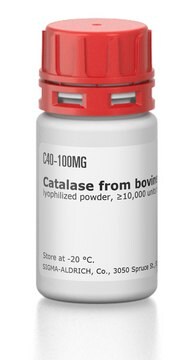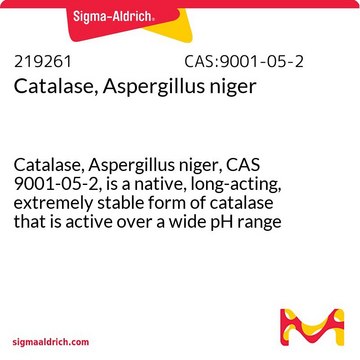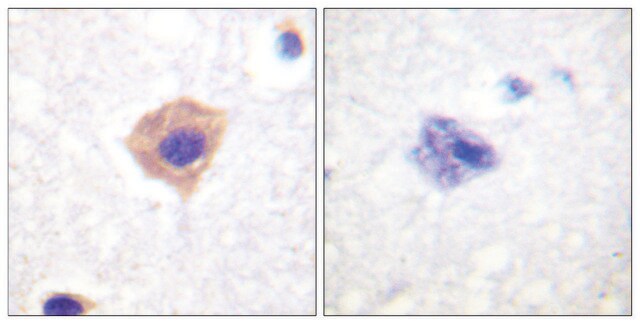Key Documents
02071
Catalase from Corynebacterium glutamicum
solution, deep brown, ≥500000 U/mL
About This Item
Polecane produkty
pochodzenie biologiczne
bacterial (Corynebacterium glutamicum)
Postać
solution
stężenie
≥500000 U/mL
kolor
deep brown
Warunki transportu
wet ice
temp. przechowywania
2-8°C
InChI
1S/C9H10O3/c1-2-12-9(11)7-3-5-8(10)6-4-7/h3-6,10H,2H2,1H3
Klucz InChI
NUVBSKCKDOMJSU-UHFFFAOYSA-N
Opis ogólny
Zastosowanie
Działania biochem./fizjol.
Definicja jednostki
Postać fizyczna
Inne uwagi
Hasło ostrzegawcze
Warning
Zwroty wskazujące rodzaj zagrożenia
Zwroty wskazujące środki ostrożności
Klasyfikacja zagrożeń
Flam. Liq. 3
Kod klasy składowania
3 - Flammable liquids
Klasa zagrożenia wodnego (WGK)
WGK 1
Temperatura zapłonu (°F)
105.8 °F - closed cup
Temperatura zapłonu (°C)
41 °C - closed cup
Środki ochrony indywidualnej
Eyeshields, Faceshields, Gloves, type ABEK (EN14387) respirator filter
Certyfikaty analizy (CoA)
Poszukaj Certyfikaty analizy (CoA), wpisując numer partii/serii produktów. Numery serii i partii można znaleźć na etykiecie produktu po słowach „seria” lub „partia”.
Masz już ten produkt?
Dokumenty związane z niedawno zakupionymi produktami zostały zamieszczone w Bibliotece dokumentów.
Klienci oglądali również te produkty
Nasz zespół naukowców ma doświadczenie we wszystkich obszarach badań, w tym w naukach przyrodniczych, materiałoznawstwie, syntezie chemicznej, chromatografii, analityce i wielu innych dziedzinach.
Skontaktuj się z zespołem ds. pomocy technicznej














